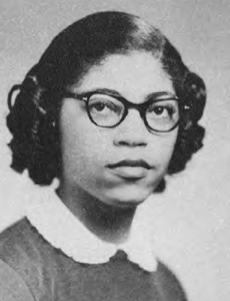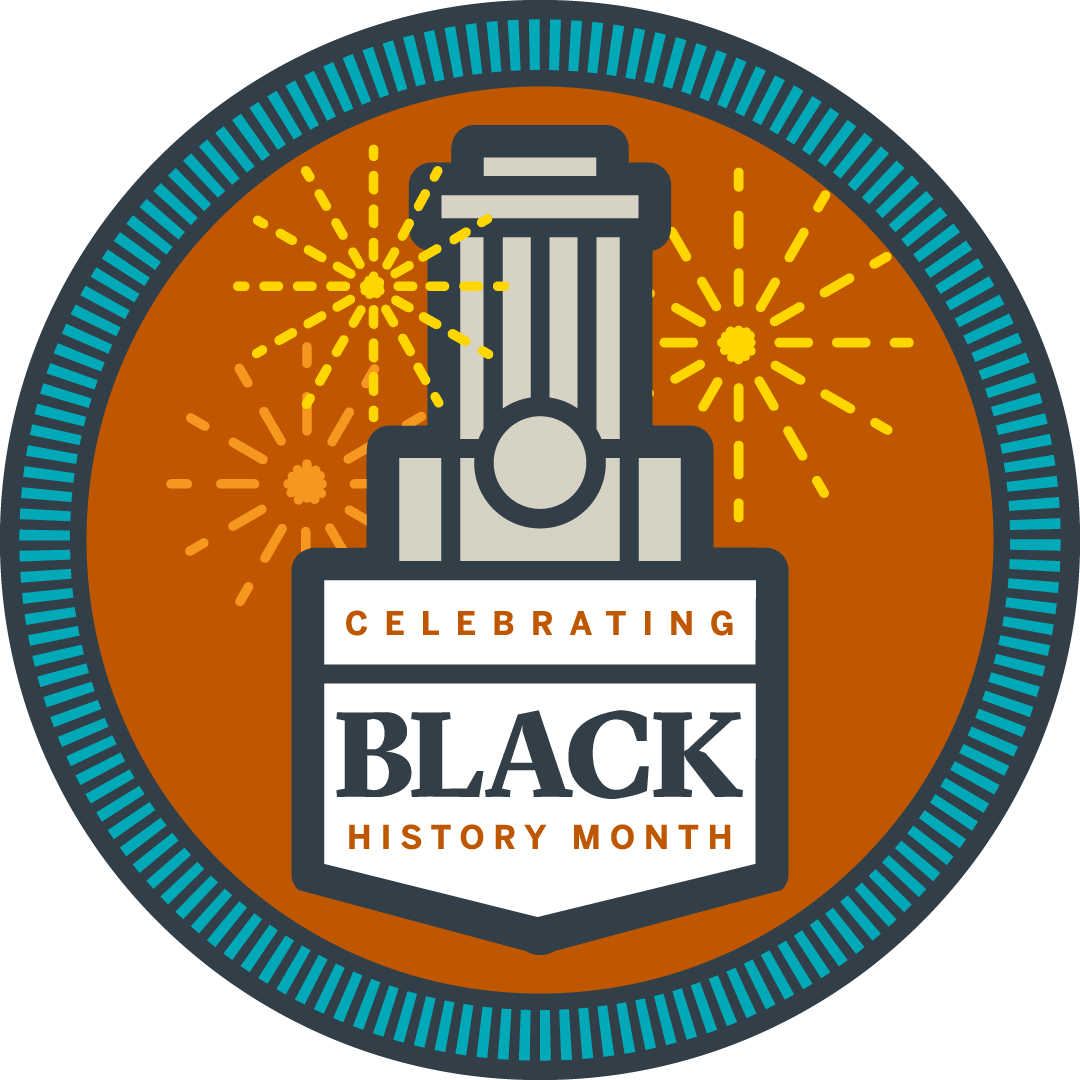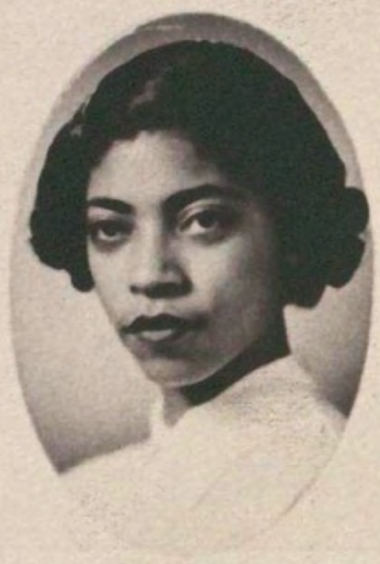
Throughout the month of February, Texas Law is visiting the stories of law school history and historical figures and celebrating the impact they had on the university, on Texas, and on civic leadership in America.
Gloria Katrina Bradford, of the Class of 1954, was the first Black woman to graduate from Texas Law. She was a classmate of both Heman Sweatt and Virgil Lott and enjoyed many connections to notable civil rights figures, including Thurgood Marshall—who hired Bradford as an attorney to represent the NAACP in matters in Texas in the late 1950s—and Charlye Ola Farris, the first Black woman to be licensed to practice law in Texas.
Bradford was a pioneer in her own right, as the first Black woman to try a case in Harris County District Court, a feat she accomplished just months after graduation. She remains an important figure in the law school today, as the names of The Bradford Society, one of Texas Law’s eight societies for students.
Jasmine Wynton, a partner at Thompson Coburn is Dallas, was moved to tell Bradford’s story in a 2020 edition of the Journal of the Texas Supreme Court Historical Society. We share the first part of this profile below, and insist that you visit the Historical Society’s original version to read the full essay and its many footnotes, which provide invaluable historical context and references (and which, due to formatting restrictions, we are unable to reproduce here).
We also encourage you to read the Tarlton Law Library oral history with Gloria Bradford, conducted in 2011, two years before her death, a few weeks shy of her 83rd birthday.
Despite the challenges of the time she attended law school, Bradford was filled with good memories of the place, its people, and of the Austin she lived in at that time. When asked about her most vivid memory or law school, she said, “The camaraderie of the law students, (which) went past the segregation problem.”

A PROFILE IN COURAGE: GLORIA KATRINA BRADFORD
By Jasmine S. Wynton
From the Journal of the Texas Supreme Court Historical Society,
Fall 2020 edition.

Before the U.S. Supreme Court’s 1954 landmark decision in Brown v. Board of Education, which declared racial segregation in public schools unconstitutional, there was the Court’s lesser-known ruling in Sweatt v. Painter, just four years earlier, that delivered a crucial blow to legal segregation. In Sweatt v. Painter, the Court ruled that the equal Protection Clause of the Fourteenth Amendment required the admission of a Black man, Heman Marion Sweatt, to The University of Texas School of Law, because the State of Texas could not provide Black students with a legal education equivalent to that offered by the State to white students. Following the Supreme Court’s decision in June of 1950, Sweatt enrolled at the University of Texas Law School that fall, along with five other black male students—Jacob Carruthers, Elwin Jarmon, Virgil Lott, Dudley Redd, and George Washington, Jr.—the first six black students to attend the law school.
History has paid much attention to Mr. Sweatt for paving the way for other African Americans to receive a legal education in Texas, and to his classmate, Mr. Lott, who ultimately became the first African American to graduate from the University of Texas Law School. Less known is the story of Gloria Bradford, a courageous young woman who would later enroll at UT Law School in fall of 1951—just a year after Mr. Sweatt’s historic victory—and in 1954, become the first African American woman to graduate from the law school. This article seeks to shed a much-deserved spotlight on the story of Ms. Bradford, an African American woman who dared to enroll in law school in the Jim Crow South, in an era in which women were being denied the most basic rights on the basis of their sex, such as the right to serve on a jury. Despite facing double discrimination based on race and gender, Ms. Bradford successfully graduated from UT in 1954, earned a Texas law license, and went on to become the first African American woman to try a case in Harris County District Court.
Early Life
Gloria Katrina Bradford was born on February 19, 1930, to James K. Bradford and Olivia Sweeney Bradford. She was the oldest of three girls. She grew up mostly in Houston, Texas, but briefly lived in Massachusetts for two years, where she went to school for seventh and eighth grades in Cambridge, before returning back to Houston. Her father was a doorman at what was then known as Rice Hotel in downtown Houston, Texas. Her parents divorced when she was 12 and her father obtained custody over Gloria and her sisters, and she lived with her father’s mother throughout high school. She attended public, segregated schools in Houston. Her first exposure to attending an integrated school, however, was when she attended middle school at Henry Wadsworth Longfellow school in Cambridge, Massachusetts. Bradford would later recall that she enjoyed attending an integrated school in Cambridge, and felt that she was treated like an equal, despite being one of perhaps twenty black students out of 800 total students. Further, it was at school in Cambridge that she was first exposed to the arts and music, where students would have the opportunity to win tickets to the symphony. Bradford would later return to Houston for high school. In 1946, she graduated from Booker T. Washington High School, which, at the time was located at its original location on West Dallas Street in downtown Houston.
Pre-Law School
Bradford graduated from Prairie View A&M College (now Prairie View A&M University) in 1949, while it was also segregated. Initially, Bradford was a chemistry major at Prairie View, but then later changed her major to political science and history. Bradford was interested in current events and public affairs, which she attributes to her paternal grandmother, an elementary school teacher, who instructed Bradford and her sisters to better themselves by being aware of current events and staying engaged. Even though she was interested in political science, Bradford had not seriously considered going to law school while she was in college.
As an undergraduate student at Prairie View, Bradford was involved in the student Christian movement during college, particularly the Young Women’s Christian Association (YWCA), and the Young Men’s Christian Association (YMCA). Indeed, during her senior year, Bradford served as the fourth vice president of the national YWCA, which would have her travel to places from the Hill Country to Wisconsin with students from across the nation—an experience that Bradford would later describe as her “first formative experience with integrated settings in school.” Furthermore, Bradford was also involved in photography as a college student, describing herself as a photographer and as one that was “always out in the lime-light.”
After graduating from Prairie View, Bradford moved to Washington, D.C., where she interned during the summer of 1949 for the Library of Congress. Following her internship with the Library of Congress, Bradford worked briefly as a saleswoman for a plastics company called the House of Plastics before working as a cash accounting clerk for the Department of Treasury Bureau of the Public Debt in 1950. That same year, Bradford also began post-graduate work at American University. She also served as a member of the Friends Committee on National Legislation.
It was during her time working in Washington that Bradford would be inspired to attend law school by her roommate at the time, Charlye O. Farris, a law student at Howard University law school. Farris, a fellow Texan and a former classmate of Bradford’s, also graduated from Booker T. Washington High School and Prairie View with a degree in Political Science. It is telling that Bradford and Farris were roommates, as Farris would later become the first African American woman to be admitted to practice law in Texas in 1953, and the first…
Continue to read this powerful story at the Journal of the Texas Supreme Court Historical Society.
